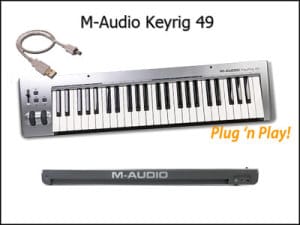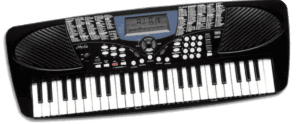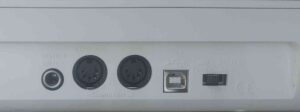Digital Keyboards

Digital Keyboard

Electronic Piano Keyboard
Fortunately, most modern computers and keyboards are plug-and-play, meaning they will be automatically recognized. However, older models may require device drivers to be installed, which can often be found on a disk or downloaded from the manufacturer's website.
 Keyboards connect to your computer via USB cable, which is the preferred method, or through a MIDI-to-USB cable. Check the back of your computer: if you see a USB port, you're all set! Most newer keyboards have USB capability. The keyboard on the right has BOTH. >
Keyboards connect to your computer via USB cable, which is the preferred method, or through a MIDI-to-USB cable. Check the back of your computer: if you see a USB port, you're all set! Most newer keyboards have USB capability. The keyboard on the right has BOTH. >
All you need is a male A to male B USB cable, similar to the one used for printers.
If you find there are only round black plugs labeled MIDI in/MIDI out instead of a USB connection, then a MIDI-to-USB cable will be necessary. For ease of installation, we highly recommend using a USB connection if possible. It's also wise to consult your keyboard manufacturer for guidance on the best compatible cable.
For an optimal experience with Piano Wizard, keyboards with 49 keys, covering a 4-octave range, work exceptionally well, as all our lessons fit comfortably within that range. However, when downloading songs from the internet, some may have a larger note range. If your keyboard doesn't have enough keys, you might miss out on playing certain notes in the game. For personal growth and a more versatile playing experience, we suggest opting for a keyboard with 61 keys.
Choosing the right keyboard can significantly enhance your learning experience. Consider features like touch sensitivity, which can help you develop your playing dynamics. Additionally, look for keyboards with built-in metronomes or learning modes that can further assist you in mastering your skills. Remember, the journey to becoming a pianist is as much about the instrument as it is about practice and dedication. Explore our selection to find the perfect match for your musical aspirations.

Thank you!
Please share Piano Wizard with your friends and help spread the joy.